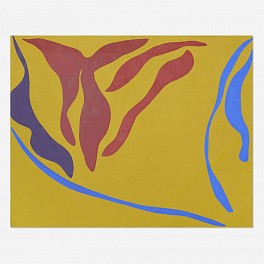BIOGRAPHY

American (1922-1990)
Parker belonged to the generation of painters that set out to react against Abstract Expressionism yet also to build upon it--what the art critic Clement Greenberg called "post-painterly abstraction." A noted jazz player, he aimed for abstractions that would be rigorous yet relaxed, ambitious yet with an airiness and ease.
In the late 1950's and early 60's his shapes had something of the assertiveness of those of Jules Olitski and Kenneth Noland, but his color was warmer than theirs - more European - and his shapes more intuitive and enigmatic. His paintings are known for their understated, restrained yet at times almost hedonistic sensuality.
''His use of color really added something to New York painting with its sharpness, clarity and power,'' wrote William C. Agee, a historian of American art. ''His color comes out of Matisse, but he extends and intensifies it."
After his early success with paintings of color seeming to float in space, he switched direction and started looking at Arp and Matisse with a new, fresh eye. He started making what he called his "free paintings," of which this work is an example. They have a lyricism usually associated with Matisse’s cutouts of the forties, or Stuart Davis’s high-keyed color abstractions. Along with artists like Jack Youngerman and George Sugarman, Parker got what was great in Matisse and Davis, and like any good player, he took the idea into the studio and didn’t come out until he made something new and personal.
His work can be found in the collections of the Whitney, the Guggenheim, LACMA and the Albright Knox Museum, among others.
